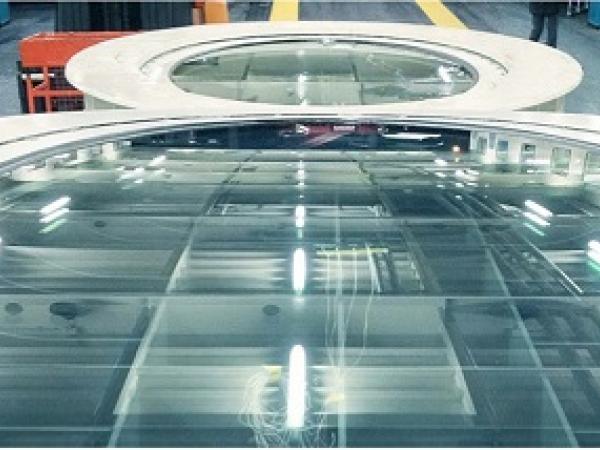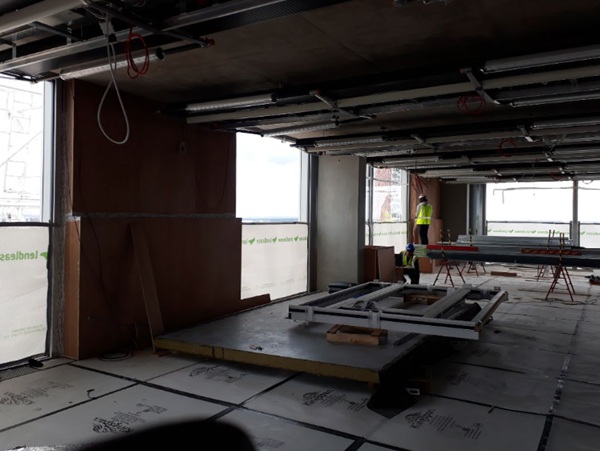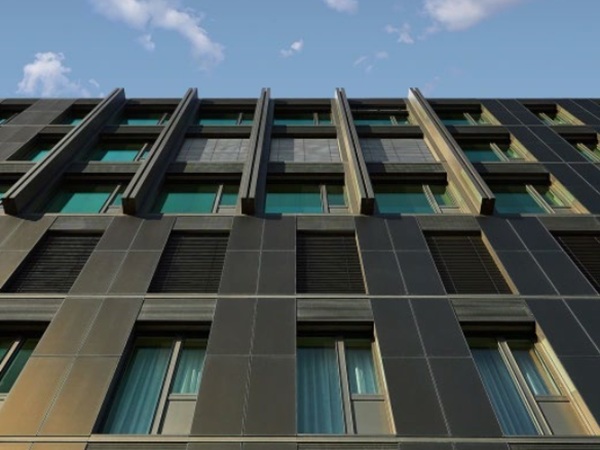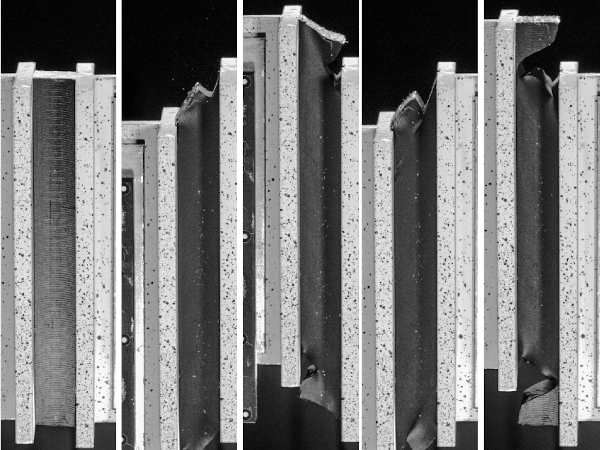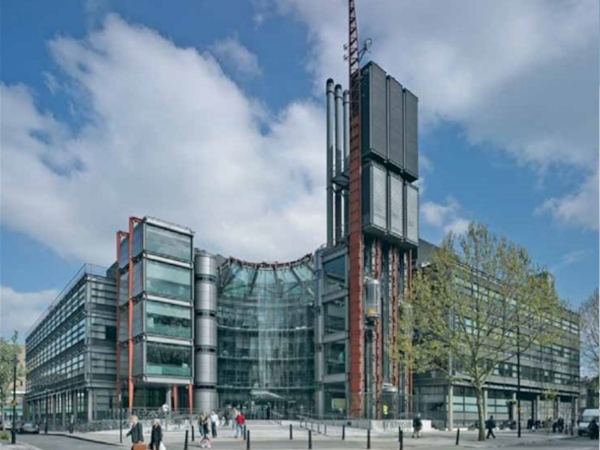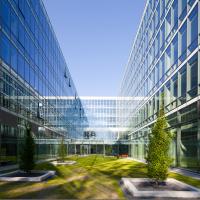The 24th glasstec – the world’s biggest trade fair for the international glass industry – will be held in Düsseldorf from 20 to 23 September 2016.
Thanks to the committed involvement of architectural offices, university departments and industry associations, glasstec offers some unique added value: the special show: glass technology live!
As part of the world’s leading trade fair for the glass industry, the special show glass technology live will be held on all four days of the event. It combines a professional exhibition and a symposium, features over 40 presentations and is considered to be a major trendsetter in manufacturing technology and structural glass engineering. Visitors can look forward to a free programme of the usual high standard in Hall 11.
Held under the patronage of Stefan Behling, Foster and Partners in London, and organised by the Institute of Construction Design at the University of Stuttgart, the show will present a range of promising functional glasses, structural glass engineering as well as instances of design and aesthetics, using glass. This year’s buzzwords are, in particular, smart glass and interactivity.
Highlights of the special show
The renaissance of cast glass at ABT
The Dutch engineering office ABT has been well known for feasible and prestigious architectural structures since the 1950s. Not surprisingly therefore, ABT’s engineers have now designed a complete façade made of cast glass, including window and door frames, in a collaborative project with MVRDV architects.
The blocks, struts and columns are made of solid cast glass and have a compressive strength that is clearly higher than regular masonry. At the trade fair ABT will be showing a mock-up of its cast glass, developed in collaboration with the Technical University of Delft. The glass was used in this form for the façade of Crystal House in P.C. Hoofdstraat in Amsterdam.
Bringing light into the darkness
A photoconductive layer integrated in an insulating glass unit turns a simple window, a partition wall or a façade into a light source. The ALED technology of the Austrian company LightGlass Technology GmbH allows the creation of smart architectural glass that meets all technical requirements for interior and exterior applications.
The company’s technology features dynamic control of both full transparency and homogeneous and bright illumination of glass without causing glare. Moreover, the system automatically regulates itself to suit the prevailing light situation.
Everything is controlled and programmed via an app or a suitable facility management system. At the special show LightGlass will demonstrate some examples illustrating its use on residential and business premises.
1.2 tons of clear vision
This is the weight of a single LSG-window in a mega yacht, made by sedak in Bavaria. For this mega yacht, sedak manufactured 40 elliptical glass panes with several glass and laminate thicknesses and 15 different bending radii – individually for the enormous visual and technical requirements in shipbuilding.
For shipbuilding, Sedak has created its own product line for this purpose, with products that meet the strict certification requirements specified in Lloyd’s Register.
For the exhibit sedak GmbH & Co. KG presents its core expertise exemplarily with a 20mm thick triple laminate in the dimensions 1.28m x 3.68m. The so-called ‚shell window’ was cold bent during lamination with a rise of 30mm. The bending line is diagonal so that the glass pane nestles perfectly against the ship’s spherically shaped hull.
Highly informative presentations on each day of the trade fair
Each of the four trade fair days will have its own thematic focus, offered by an international range of speakers, with German/English simultaneous interpreting.
Technical innovations in the melting and shaping of glass, presented by DGG/HVG
What is the impact, for instance, of gas quality on the glass melting process? This interesting aspect will be highlighted on Tuesday by the independent Gas-Wärme-Institut (Gas Heat Institute) from Essen. The institute provides consultancy for industrial gas producers and consumers and conducts its own research.
Other elements that impact the quality of glass manufacturing are homogeneous heat and a clean combustion process. Jochen Volkert, PhD, from promeos GmbH in Nuremberg, will present a flameless gas burner for all thermal production processes at the trade fair.
Combustion takes place in a porous ceramic container, while the heat is emitted as surface radiation or homogeneous heat. This means that there are no hot spots, while the actual heat is used with greater economic efficiency.
Other presentations on Tuesday will focus on automatic gas melting processes and how to increase efficiency through the use of robots. The day will conclude with a visionary talk entitled “The Glass Factory of the Future”.
Matthias Kümmerle, PhD, from the glass forming and test machine manufacturers Bucher Emhard Glas SA will venture a glimpse of the proverbial crystal ball.
Glass Industry 4.0 – smart networking of production technologies and processes
An ongoing exchange of data enables machine systems to learn from mistakes and to avoid them in the future. Production improves during the actual process. The value chain is optimised one hundred per cent.
Thanks to data networking between the various manufacturing routines, a smart system can warrant greater transparency and better safety in the creation of high-quality products.
However, Industry 4.0 also requires some major data security. Glass machine manufacturers and universities are collaborating closely on this issue, e.g. Grenzebach Maschinenbau GmbH and the University of Applied Science in Augsburg. The results will be presented at a half-hour talk on Wednesday.
Processes are in place, which control and regulate manufacturing operations while they are in progress.
In addition, quality scanners are already in use today, scanners which can be integrated into an existing production facility at any time and which then work according to the specific requirements of each manufacturer.
Rainer Feuster from viprotron GmbH, the technology leaders in this segment, will talk about his company’s practical experience.
Several presentations that day will take a close look at the broad field of laser technology in connection with further processing, particularly of optical glasses.
In this presentation programme the German Machinery & Plant Manufacturers' Association (VDMA) will offer an overview of the latest processing and finishing technologies.
Transparent building envelopes and digital planning processes in architecture
The City of London is famous for its prestigious functional buildings where glass plays a major role as a material. Josef Ludwig is an engineer at the planning office p4e and someone who knows the exact requirements of functional glass buildings.
Preliminary collaboration with both architects and investors is fundamental to any secure planning and smooth procedures. His motto is: know what’s feasible.
He will report on the planning of structural engineering for urban development projects, illustrated by a recent example: the complete redesign of the Tottenham Court Road tube station, a central hub in London’s underground system.
The most spectacular illustration – again from London – will be the two-part residential complex Embassy Gardens in Battersea, due to be completed in 2018.
Apartments will be created in the immediate vicinity of the US Embassy, nestling within a green oasis. The link between the two 10-storey buildings will be a glass swimming pool at a height of 35 metres. The pool will be 25 metres long and three metres deep.
The design and feasibility study are in the hands of the engineering office Eckersley O’Callaghan (EO’C) in London. This breathtaking project will be presented by James O’Callaghan himself, who will show that present-day engineering presents virtually no limits to planners any longer.
Requirements on windows and façades – today and tomorrow – presented by the German Federal Flat Glass Manufacturers’ Association.
Flat glass as a multi-layered insulated glazing solution has been standard in residential construction for 40 years now. Thanks to smart technologies, it has recently started to assume an increase number of further functions.
Industrial enterprises are currently working with universities on various government-sponsored research projects designed to create zero energy buildings.
One such project is MEM4WIN which is supported by the University of Kassel: It involves a quadruple glazing unit based on thin glass in conjunction with a shading and light control system made from micromirrors (so-called active windows, INA, University of Kassel) as well as segments using organic photovoltaics, a solar thermal setup and organic light diodes (OLED).”
(Research Portal of the University of Kassel, http://forschung.uni-kassel.de/converis/project/12313)
However, this is a journey that started quite a while ago. Switchable glass with an integrated sunshield, daylight planning in office buildings and power generation based on integrated silicon cells are no longer things of the future. Do please come to one of the many presentations on this subject on Friday afternoon.
Several professionals will provide information on regulatory requirements and changes as well as on the latest progress in developing a European glass measuring standard. Will the German standard soon be a European standard?
Source: DETAILstructure 02/15, Die Weiterentwicklung tragender Glaskonstruktionen, pp. 76-77


